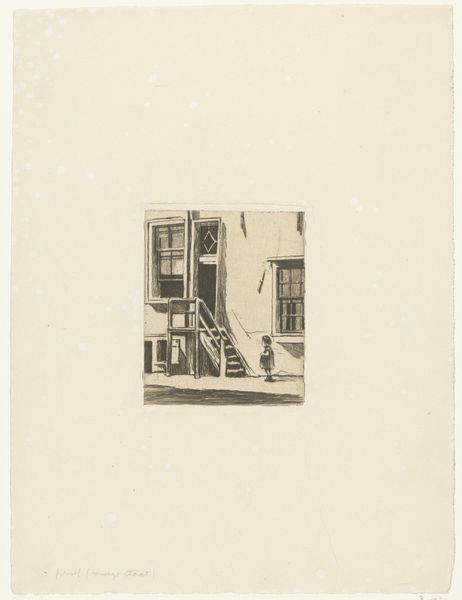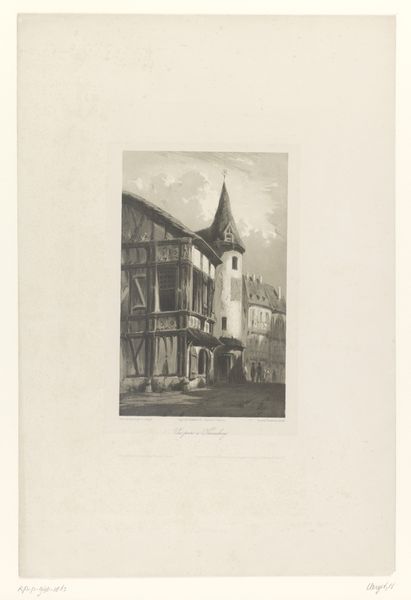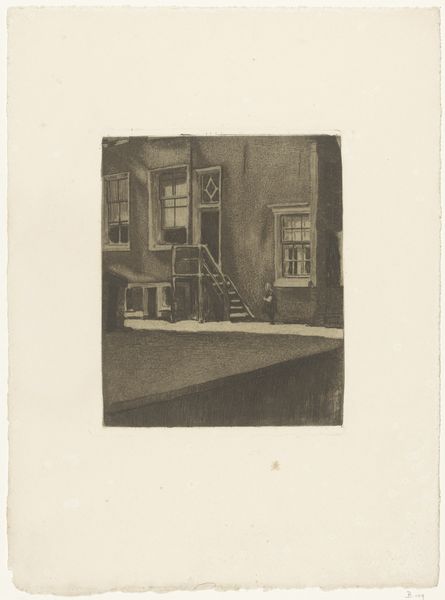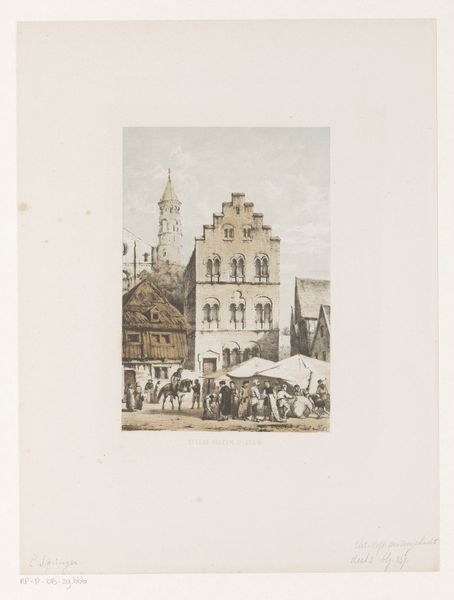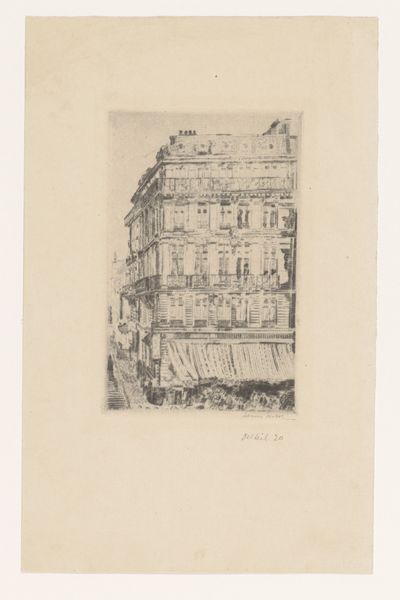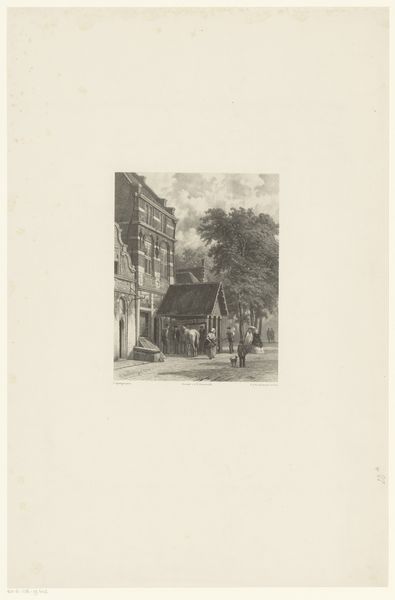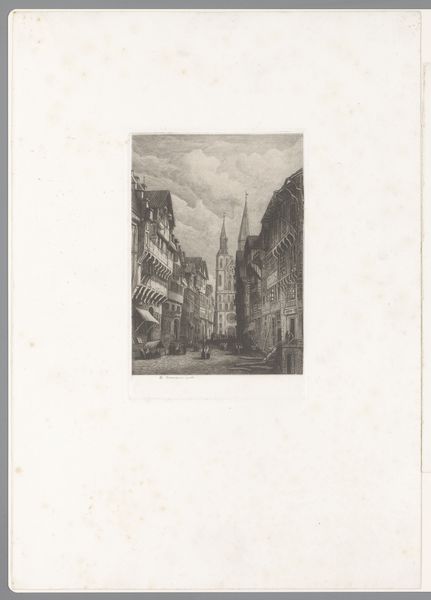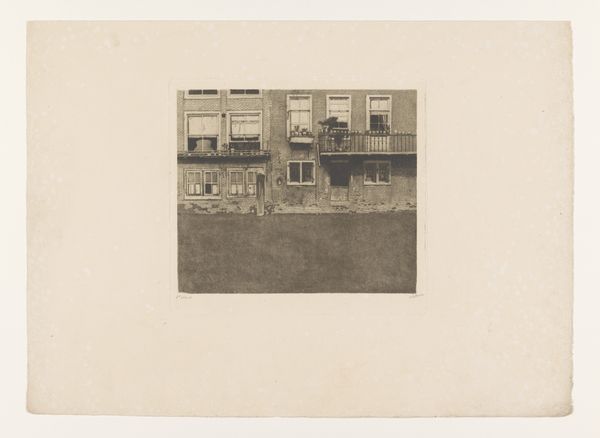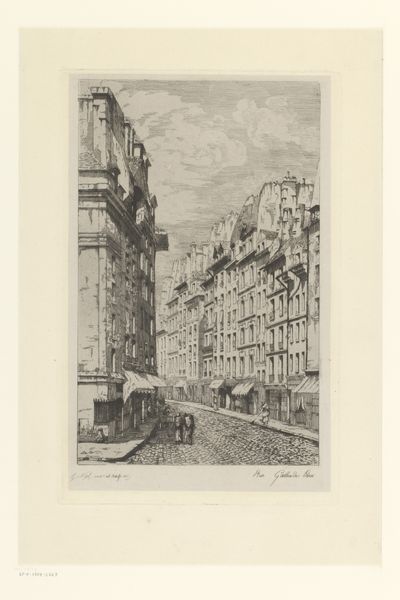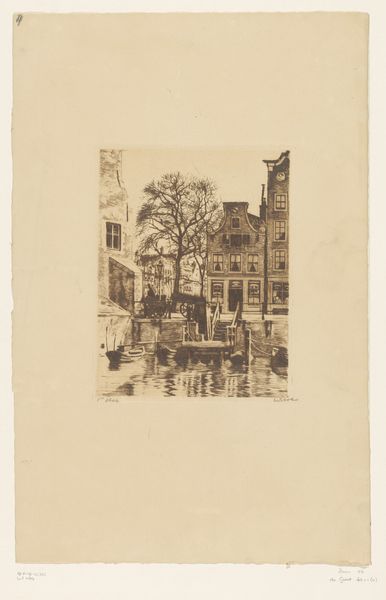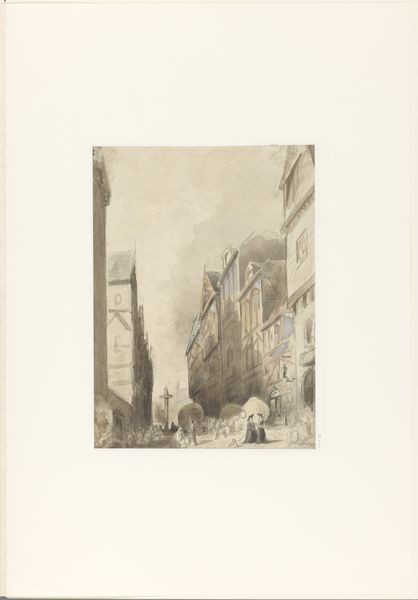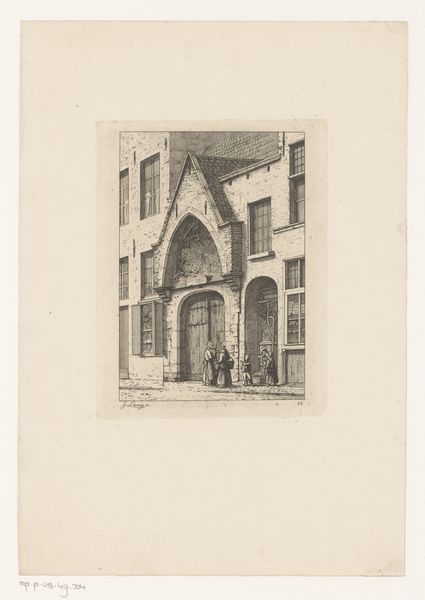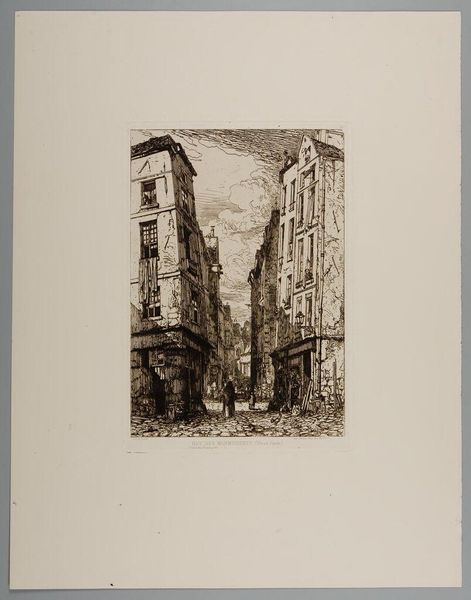
#
photo of handprinted image
#
aged paper
#
light pencil work
#
ink paper printed
#
parchment
#
pencil sketch
#
light coloured
#
old engraving style
#
hand drawn type
#
etching
Dimensions: height 127 mm, width 87 mm
Copyright: Rijks Museum: Open Domain
Curator: What a delightful view! This piece, "Gezicht op huizen en grote trap te Blankenberge," or "View of houses and large stairs in Blankenberge," is attributed to Louis Jaugey, created sometime between 1850 and 1899. Editor: It’s evocative; a somber yet charming stillness permeates this street scene. The grand staircase visually dominates, a kind of silent invitation amidst those stoic buildings. Curator: Indeed. Blankenberge was a developing seaside resort in Belgium during that period. You can sense the aspirations of a town building itself, layer by layer. Notice how the inclusion of what appears to be a storefront or shop hints at emerging commerce in a leisure destination. Editor: Precisely! Those stairs--they symbolize ambition, literally elevated above the mundane. The architectural details, even in this modest scale, speak of a rising bourgeoisie, their societal climb mirrored in the steep ascent of those steps. Plus the almost dreamlike placement of the bird flying above adds an aspiration that society perhaps could not. Curator: Absolutely. Etching offered a means of distributing images widely, creating a shared visual culture. Jaugey was an actor within his moment, reinforcing a certain perception of Belgian leisure and societal growth through printed imagery. Editor: This composition itself harkens back to older allegorical prints. The interplay of light and shadow creates almost a moral dimension to this urban landscape. The stairs almost appear to be heading towards the heavens or perhaps to greater moral grounding, which adds greater complexity of the rising Belgium economy. Curator: Well, I'm more inclined to see this as a document of urban development, but I admit the composition lends it a timeless quality, speaking to aspirations that stretch beyond a specific time and place. Editor: Agreed, in that its relevance as a mirror to rising socio-economic structures is still relatable today in societies that are built on similar class systems. Curator: This piece serves as a reminder that images are shaped as much by their socio-historical context as they are by the individual artist’s vision. Editor: And that visual languages created long ago still inform how we see ourselves today, reflecting our continuing societal evolutions.
Comments
No comments
Be the first to comment and join the conversation on the ultimate creative platform.
